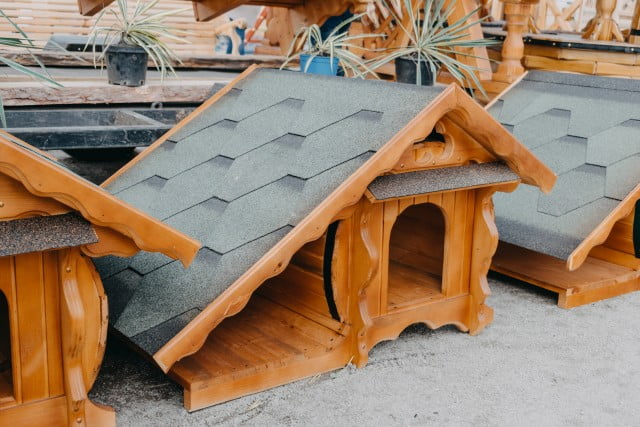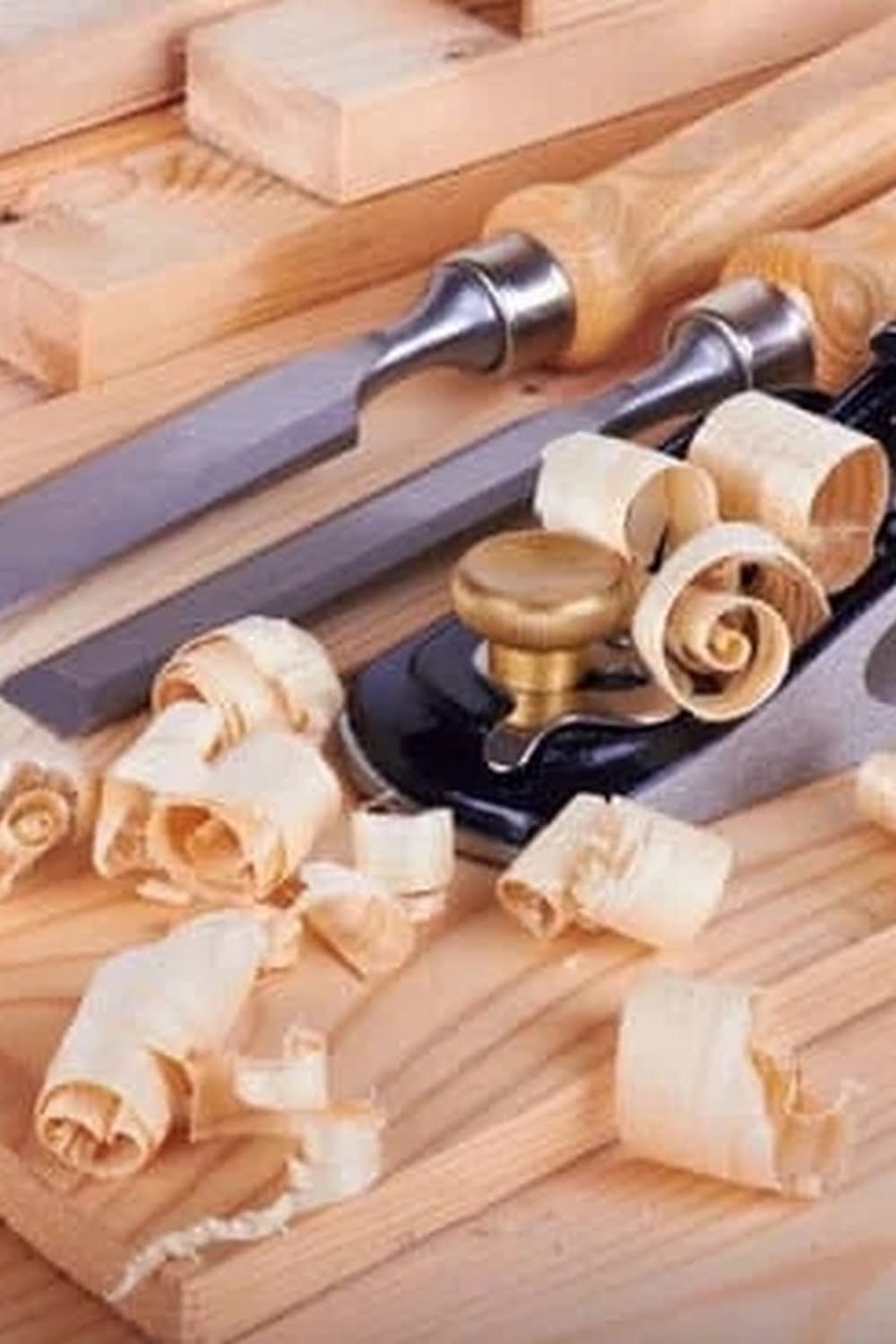Woodworking is a craft that requires precision, creativity, and patience. Whether you are a seasoned woodworker or just starting out, having a reliable workbench is crucial for any project. In this article, we will guide you on how to make an easy woodworking bench that will serve as a sturdy foundation for all your future endeavors.
A workbench is not just any ordinary table; it is a dedicated space where you can safely and efficiently work on your projects. It provides stability and support for cutting, sawing, chiseling, and other woodworking tasks. By having a proper workbench, you can enhance your accuracy and control over your tools, ultimately leading to better craftsmanship.
The great thing about making your own easy woodworking bench is that you have full control over its design and dimensions. You can customize it according to your workspace and individual needs. Plus, building your own bench allows you to save money compared to buying a pre-made one from the store.
In the following sections of this article, we will guide you through each step of building an easy woodworking bench. We will start by discussing the necessary tools and materials required for the project. Then, we will delve into choosing the right type of wood for your bench and share various design considerations. Finally, we will provide you with step-by-step instructions on constructing the base and adding a sturdy work surface.
So let’s jump in and create the perfect workspace tailored specifically for woodworking. With this easy-to-follow guide, you’ll be well on your way to enjoying the benefits of having your very own reliable woodworking bench in no time.
Tools and Materials Required
To build an easy woodworking bench, you will need a variety of tools and materials. Having the right tools and materials is crucial to ensure that the construction process goes smoothly and that the resulting bench is sturdy and reliable. Here is a list of the necessary tools and materials:
Tools:
- Circular saw or table saw: This tool is essential for cutting the wood accurately to the desired dimensions.
- Drill: A power drill is needed to create holes for screws or other fasteners during assembly.
- Screwdriver: Both a flathead and Phillips head screwdriver will be useful for tightening screws.
- Tape measure: Accurate measurements are crucial when building a woodworking bench, so having a tape measure on hand is essential.
- Clamps: Clamps are necessary for holding pieces of wood together securely while assembling the bench.
- Pencil or marker: These will be used for marking measurements on the wood.
Materials:
- Wood: Choose a durable and hardwood species, such as oak or maple, for the best results. The amount of wood needed depends on the desired size of the bench.
- Screws: Select high-quality screws that are appropriate in length and thickness for securing the different parts of your bench.
- Wood glue: Wood glue helps reinforce joints, making them stronger and more stable.
- Sandpaper: You will need sandpaper with varying grits (such as 80-grit, 120-grit, and 220-grit) to smooth out any rough edges or surfaces before applying a finish.
While these tools and materials are recommended for building an easy woodworking bench, there may be alternatives available depending on your budget range or personal preferences. For example, if you don’t have access to power tools like circular saws or drills, you can use hand saws or manual screwdrivers instead.
Remember to prioritize safety by wearing protective gear such as goggles or gloves when using tools, and always follow the manufacturer’s instructions and recommended safety guidelines. Having all the necessary tools and materials ready before starting the construction process will make the overall building experience much more enjoyable and successful.
Choosing Wood for Your Bench
Choosing the right type of wood for your woodworking bench is a crucial step in the building process. The type of wood you choose will determine not only the appearance of your bench but also its durability and functionality. In this section, we will discuss the different types of wood that are suitable for building a woodworking bench, their pros and cons, and recommend the best wood for beginners.
Types of Wood
- Softwoods: Softwoods like pine, fir, or spruce are popular choices for woodworking benches due to their affordability and availability. They are relatively easy to work with and ideal for beginners. However, softwoods may not be as durable as hardwoods and can dent or scratch more easily.
- Hardwoods: Hardwoods such as oak, maple, or beech are known for their strength and longevity. They can withstand heavy use over time and are less prone to dents or scratches compared to softwoods. While hardwoods may cost more than softwoods, they offer superior stability and durability.
- Plywood: Plywood is another option worth considering for your bench’s construction. It consists of multiple layers of thin wood veneers glued together, making it stable and resistant to warping or shrinking. However, plywood may not provide the same level of sturdiness as solid wood options.
Recommendations
For beginners or those on a tight budget, pine or fir can be excellent choices due to their affordability and ease of working with. They may require more maintenance and care but can still provide a reliable work surface.
If you prioritize durability and stability over cost considerations, hardwoods like oak or maple are recommended options. These woods can withstand heavy use without compromising their integrity over time.
Ultimately, the choice of wood should align with your specific needs and preferences as a woodworker. Consider factors such as budget, desired aesthetics, availability, and intended usage when making your decision. Remember that while the choice of wood is important, proper construction techniques and finishing will also contribute to the overall durability and functionality of your woodworking bench.
Design Considerations
When building your own easy woodworking bench, it’s important to consider the design that will best suit your needs and preferences. A well-designed bench can greatly enhance your woodworking experience and make your projects more enjoyable and efficient. Here are some key design considerations to keep in mind:
- Size: The size of your bench should be determined by the available space in your workshop or garage as well as the types of projects you plan to work on. Consider the length, width, and height of the bench to ensure it will fit comfortably and allow you to maneuver around it easily.
- Stability: A sturdy and stable bench is essential for safe woodworking. Choose a design that incorporates strong joinery techniques such as mortise and tenon or dowel joints. Consider adding diagonal braces or stretchers for additional stability.
- Work Surface: The work surface of your bench should be flat, smooth, and durable. Plywood, hardwood, or MDF are popular choices for workbench tops. Think about the type of projects you’ll be working on and choose a material that can withstand heavy use and resist damage from tools.
- Vices and Clamping Options: Including vices or clamping options on your workbench can greatly expand its functionality. Consider adding a front vise for holding wood securely when sawing or planing, or a tail vise for holding longer pieces during joinery tasks.
By carefully considering these design elements, you can create a woodworking bench that meets all your needs and provides a solid foundation for successful projects.
To further assist you in designing your easy woodworking bench, here is a checklist of important design considerations:
- Determine the appropriate size based on available space and project requirements.
- Select joinery techniques that provide stability.
- Choose a suitable work surface material.
- Decide if vices or clamping options are necessary.
- Consider any additional features that would enhance functionality.
With these design considerations in mind, you’ll be well on your way to building a woodworking bench that is not only practical but also a joy to use.
Step-by-Step Instructions
Gathering the necessary materials
Before starting the construction of your woodworking bench base, it is crucial to have all the required materials at hand. To build a sturdy and long-lasting base, you will need:
- Four pieces of 4×4 lumber, each measuring 32 inches in length, for the legs.
- Four pieces of 2×4 lumber, each measuring 48 inches in length, for the side stretchers.
- Two pieces of 2×6 or 2×8 lumber, each measuring 60 inches in length, for the front and back stretchers.
- A drill with a countersink bit to pre-drill holes for screws.
- Wood screws (size #8 or #10), preferably with a length of around 3 inches.
- Wood glue for extra strength (optional).
Assembling the base
- Start by attaching the legs to one of the side stretchers. Place one leg at each corner of the stretcher and use wood screws to secure them in place. Make sure to align the edges properly before drilling.
- Once you have attached all four legs to one side stretcher, attach the other side stretcher to form a rectangular frame. Ensure that all corners are flush and use wood screws to secure them tightly.
- Now it’s time to add stability and support by attaching the front and back stretchers. Position these stretchers horizontally between the two side stretchers and secure them using wood screws. It is recommended to position them about a foot from either end of your base.
- To reinforce the connections further, apply wood glue along each joint before driving in the screws. This will enhance overall strength and durability.
- After completing these steps, flip over the base to ensure everything is level and even out any discrepancies if needed.
Adding additional features
Depending on your woodworking needs and personal preferences, you may want to consider adding some extra features to your base. For example, you can install a lower shelf for storage or a tool rack to keep your tools organized and easily accessible. Take the time to plan and design any additional features before proceeding.
Remember, constructing the base is an essential step in building your easy woodworking bench. Taking the time to ensure it is sturdy and well-built will provide a solid foundation for all your future woodworking projects.
Step-by-Step Instructions
Now that you have successfully built the base of your woodworking bench, it’s time to add a sturdy work surface. The work surface is where you will be doing most of your woodworking tasks, so it’s important to choose the right material for durability and functionality. Follow these step-by-step instructions to add the work surface to your bench:
- Measure and cut the work surface material: Measure the dimensions of your woodworking bench base, ensuring accuracy. Once measured, mark these dimensions on your chosen work surface material, such as plywood, hardwood, or MDF. Use a table saw or circular saw to carefully cut the material according to your measurements.
- Attach the work surface: Place the cut piece of work surface material on top of the base, aligning it properly. Use clamps or screws to secure the work surface onto the base. Make sure all corners are flush and even before attaching.
- Add additional support: To ensure stability and prevent sagging in the middle of your workbench, consider adding additional support underneath the work surface. This can be done by attaching long pieces of wood across multiple points underneath the work surface.
Remember, there are different options for materials when it comes to your work surface. Plywood is a cost-effective choice that provides a smooth and flat working area. Hardwood offers durability and strength but may come at a higher price point. MDF (Medium-Density Fiberboard) is another option that provides a flat and stable working area but may not be as durable.
It’s important to choose a material that best suits your needs and budget. Once you have successfully added the work surface to your woodworking bench base, you’ll be ready to tackle all types of projects with ease.
Proper finishing and sealing of your woodworking bench will help enhance its durability and longevity. In the next section, we will discuss different options for finishing your bench to ensure that it stands the test of time.
Finishing and Sealing Your Bench
After completing the construction of your easy woodworking bench, it is essential to properly finish and seal it to ensure durability and longevity. Finishing your bench not only enhances its appearance but also protects the wood from moisture, wear, and other potential damages.
When it comes to finishing options for your woodworking bench, there are several choices to consider. The most common options include staining, varnishing, or painting. Staining allows you to add color while still highlighting the natural beauty of the wood grain.
Varnishing provides a protective layer that enhances the wood’s natural beauty and gives it a polished look. On the other hand, painting offers endless possibilities for customization, allowing you to match your bench with your workshop or personal style.
Before applying any finish on your woodworking bench, it is crucial to prepare the surface properly. Start by sanding down the entire bench using a medium-grit sandpaper followed by finer grits until you achieve a smooth surface. This step helps remove any imperfections and opens up the pores of the wood for better absorption of the finish.
Once you have prepared the surface, apply your chosen finish using a brush or cloth according to the manufacturer’s instructions. Make sure to coat all exposed surfaces evenly and allow sufficient drying time between layers if multiple coats are required. After applying the final coat, let it dry completely before using your woodworking bench.
Sealing your bench is also an important step in protecting it from moisture and preventing warping or rotting over time. It is recommended to use a clear water-based sealer or polyurethane topcoat to seal all exposed wood surfaces. Apply thin coats of sealer using a brush or foam applicator, following the manufacturer’s instructions for drying time between coats.
Properly finishing and sealing your easy woodworking bench not only ensures its longevity but also enhances its overall appearance. By taking this extra step in completing your project, you can enjoy your new bench for years to come while working on your woodworking projects.
| Finishing Options | Description |
|---|---|
| Staining | Adds color while highlighting natural wood grain. Provides a natural look. |
| Varnishing | Offers a protective layer, enhances natural beauty, and gives a polished appearance. |
| Painting | Allows for customization and endless design possibilities. |
Tips and Tricks for Maintenance
Woodworking benches, like any other tools, require regular maintenance in order to keep them in top condition and ensure their longevity. Here are some tips and tricks for maintaining your easy woodworking bench:
- Clean and Remove Debris: Dust, wood shavings, and other debris can accumulate on the surface of your bench over time. It is important to regularly clean your workbench to prevent any potential damage or staining. Use a brush or vacuum to remove loose debris, and wipe down the surface with a damp cloth or mild cleaner.
- Protect the Surface: The surface of your woodworking bench can easily get damaged from tools, spills, or sharp objects. To protect the benchtop, consider using sacrificial surfaces like thick cardboard or sacrificial boards made from cheap materials that can be replaced when they become worn out.
- Regularly Check for Stability: It is crucial to ensure that your woodworking bench remains stable during use. Check all joints and connections regularly to make sure they are tight and secure. If you notice any wobbling or instability in the bench, tighten the screws or bolts as needed.
- Prevent Rust: Woodworking benches often have metal components like vises or hardware that may be susceptible to rusting. To prevent rust from forming, apply a thin layer of machine oil on metal parts periodically.
- Avoid Excessive Moisture: Wood is sensitive to moisture and excessive exposure to water can cause warping or other types of damage to the benchtop. Be cautious while working with liquids near your workbench and wipe up any spills immediately.
- Practice Safe Handling: When working on your woodworking bench, always use appropriate clamps and supports to avoid accidentally damaging the surface with tools or excessive pressure. Additionally, be mindful of placing hot objects directly on the benchtop as it may cause burn marks.
Remember that proper maintenance not only extends the life of your easy woodworking bench but also ensures optimal performance and safety. By following these tips and tricks, you can enjoy your workbench for years to come.
Table: Maintenance Tips and Tricks
| Maintenance Tip | Description |
|---|---|
| Clean and Remove Debris | Regularly clean the surface of your workbench to prevent damage or staining. |
| Protect the Surface | Use sacrificial surfaces or boards to protect the benchtop from tools, spills, or sharp objects. |
| Regularly Check for Stability | Check all joints and connections to ensure the bench remains stable during use. |
| Prevent Rust | Apply machine oil periodically on metal components to prevent rust formation. |
| Avoid Excessive Moisture | To prevent warping or damage, avoid exposing the benchtop to excessive moisture and clean up spills immediately. |
| Pirctice Safe Handling |
Conclusion
In conclusion, having a reliable and sturdy workbench is essential for every woodworker. It provides a solid foundation for all woodworking projects and helps to ensure accuracy and precision in your work. By making your own easy woodworking bench, you not only save money but also have the opportunity to customize it to fit your specific needs and preferences.
Throughout this guide, we have discussed the tools and materials required, provided suggestions for different budget ranges, and explained how to choose the best wood for beginners. We have also provided various design options and styles for your woodworking bench, emphasizing the importance of considering size, height, and stability.
By following the step-by-step instructions provided in this article, you will be able to build a sturdy base and add a durable work surface that suits your requirements. The finishing touches on your bench, such as staining or varnishing, will protect it from wear and tear while enhancing its appearance.
Now that you have completed building your easy woodworking bench, it’s time to enjoy it. Whether you are a beginner or an experienced woodworker, having a reliable workbench will greatly enhance your woodworking experience. It provides a dedicated space for you to complete projects with ease and efficiency.
We encourage you to explore further learning resources or seek inspiration from other woodworkers as you continue on your woodworking journey. There are numerous online forums, tutorials, and books available that can help you refine your skills and discover new techniques.
So go ahead and start building your own easy woodworking bench today. You’ll be amazed at the difference it makes in completing projects successfully and enjoying the craft of woodworking even more.
Frequently Asked Questions
How do you make a simple woodworking bench?
To make a simple woodworking bench, you will need several materials and tools. First, start by cutting the necessary pieces of lumber to create the framework of the bench. Generally, you’ll need four legs, two longer boards for the top and bottom of the bench, and shorter rails to connect them. Use a saw to make accurate cuts according to your measurements. Then, assemble the framework by attaching the pieces together using screws or nails.
Ensure that everything is sturdy and secure. Next, add a solid work surface on top of the framework. This can be achieved by attaching plywood or solid wood boards onto the top rails. Finally, sand down any rough edges and surfaces to create a smooth finish, and consider applying a protective coat of varnish or paint if desired.
How to make a workbench out of a 2×4?
Making a workbench out of a 2×4 is quite feasible and requires some basic carpentry skills. Start by measuring and cutting the required lengths from your 2×4 lumber to form the legs of your workbench; generally, two legs would be enough for each end of the bench. Afterward, cut longer boards from more 2x4s to serve as horizontal supports that connect these legs on each side.
Use screws or nails to attach these components securely in place while ensuring they are level and straight. Once you have constructed both ends with diagonal bracing for added stability if desired, span additional 2x4s across them at regular intervals as support beams for your workbench’s tabletop or work surface. Finally, attach plywood or solid wood boards onto these support beams with screws or nails to complete your 2×4 workbench.
How many 2×4 do I need to make a workbench?
The number of 2x4s needed to construct a workbench depends on its size and design specifications. As there are various possible dimensions for a workbench, it’s important to determine what size you want yours before calculating material requirements accurately. For instance, if you decide on a standard workbench height of around 36 inches, you might need four or more 2x4s for the legs.
Another two to four 2x4s can be used as supports along the sides, and additional pieces may be necessary for bracing or connecting components. Additionally, if you plan to have a solid tabletop comprised of 2×4 frames with plywood or solid wood boards, this would require more lumber accordingly. It’s advisable to sketch out your desired workbench design first and list all the necessary measurements before estimating how many 2x4s you’ll need at the hardware store.

Hi everyone! I’m a woodworker and blogger, and this is my woodworking blog. In my blog, I share tips and tricks for woodworkers of all skill levels, as well as project ideas that you can try yourself.





